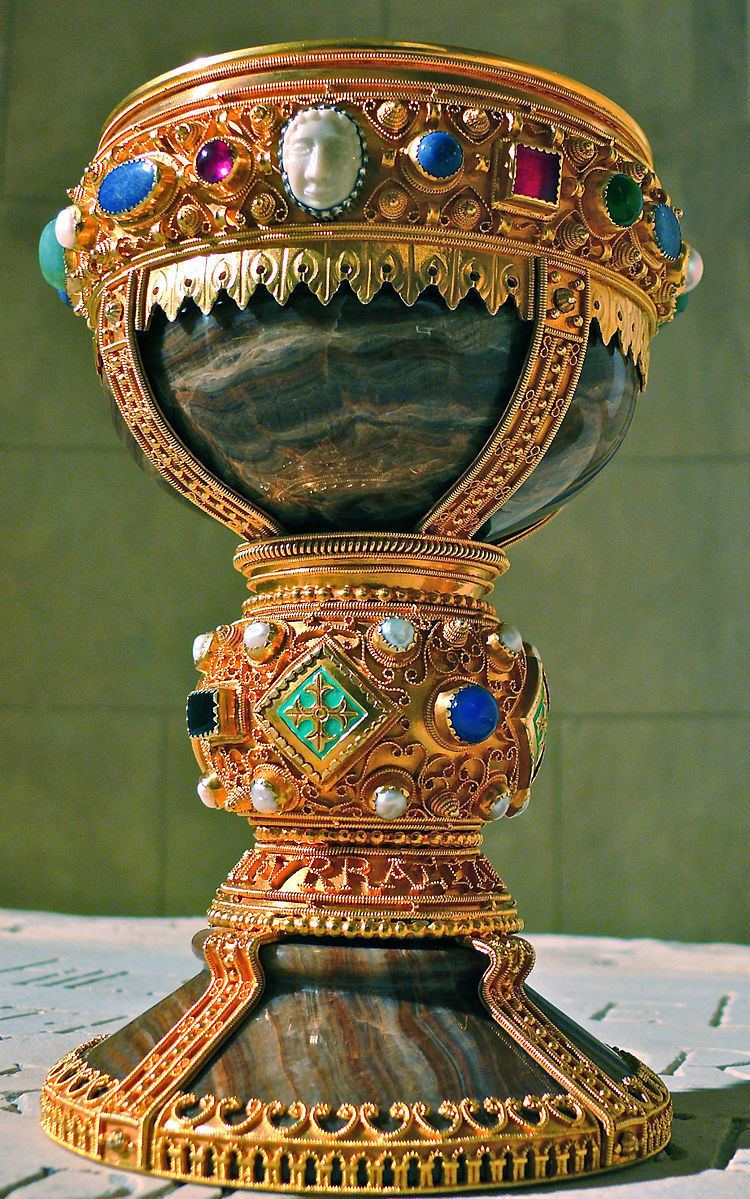 | ||
The Chalice of Doña Urraca is a jewel-encrusted onyx chalice which is alleged to be the Holy Grail, the cup from which Jesus drank and served Holy Communion. It belonged to Urraca of Zamora, daughter of Ferdinand I of Leon.
Contents
Location
The chalice is kept at the Basilica of San Isidoro in León, Spain where historians say it has been since the 11th century.
Since the publication of The Kings of the Grail in March 2014, which claims the chalice is the Holy Grail, the museum staff at the basilica have withdrawn the chalice from display, saying the crowds seeking to visit the museum were too large for it to handle. The museum is currently looking for a larger space where the chalice can be displayed.
History and Holy Grail claims
Authors and researchers, Margarita Torres and José Ortega del Rio, published their book, The Kings of the Grail, in March 2014 claiming they had traced the origins of the chalice to the early Christian communities of Jerusalem.
The researchers say the chalice was transported to Cairo by Muslim travellers and was later given to an emir on the Spanish coast who had assisted victims of a famine in Egypt. From there, the chalice came into the possession of King Ferdinand I of Leon, father of Urraca of Zamora, as a peace offering by an Andalusian ruler.
Carbon dating suggests the chalice was made between 200 BC and 100 AD. According to Torres, "the only chalice that could be considered the chalice of Christ is that which made the journey to Cairo and then from Cairo to León — and that is this chalice".
Archaeologists quickly sought to dispel Torres and del Rio's claims, pointing out that an estimated 200 different cups and chalices across Europe, "vie for the title". Diarmaid MacCulloch, Professor of the History of the Church at Oxford University, said the claims were "idiotic". The authors expressed uncertainty about whether Jesus actually used the cup.
